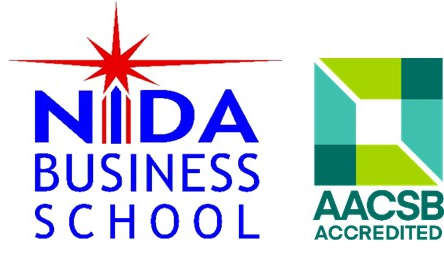แนวทางการเข้าเป็นบริษัทจดทะเบียน IPO หรือ RTO?
คำสำคัญ:
การจดทะเบียนทางตรง, การจดทะเบียนทางอ้อม, การซื้อธุรกิจแบบย้อนกลับ, เกณฑ์การเข้าเป็นบริษัทจดทะเบียนบทคัดย่อ
ปัจจุบันมีความเชื่อว่าบริษัทที่เลือกจดทะเบียนทางอ้อมโดยวิธีการซื้อธุรกิจแบบย้อนกลับที่เรียกว่า Reverse takeover (RTO) คือบริษัทที่มีวัตถุประสงค์แอบแฝง หรือ บริษัทที่มีคุณสมบัติเป็นบริษัทจดทะเบียนไม่ครบถ้วน จึงเข้าสวมสิทธิในการจดทะเบียนโดยการซื้อกิจการที่จดทะเบียนอยู่แล้วจนมีผลให้เจ้าของกิจการหรือสินทรัพย์ที่ถูกซื้อนั้นเข้ามาเป็นผู้มีอำนาจควบคุมในบริษัท ดังนั้นการเข้าจดทะเบียนด้วยการทำ RTO มักจะมีภาพลักษณ์ที่ไม่ดีในสายตานักลงทุน งานวิจัยชิ้นนี้ประเมินผลกระทบของการเข้าจดทะเบียนทางอ้อม ต่อความมั่งคั่งของนักลงทุน ความสามารถในฟื้นฟูหรือปรับปรุงกิจการที่ถูกซื้อ และ เพิ่มสภาพคล่องให้กับตลาดหลักทรัพย์โดยใช้กลุ่มตัวอย่างบริษัทในตลาดสิงคโปร์และตลาดไทยระหว่างปี 2008-2015 ผลการศึกษาพบว่าเกณฑ์การเข้าจดทะเบียนโดยรวมของสิงคโปร์มีความยืดหยุ่นกว่าของไทย แต่เงื่อนไขการเข้าจดทะเบียนทางอ้อมสำหรับทั้งสองตลาดไม่ได้ลดคุณสมบัติของบริษัทภายหลังการควบรวมตามที่บุคคลทั่วไปอาจเข้าใจ ภายหลังการทำ RTO เสร็จสิ้น ไม่พบว่าบริษัทที่ดำเนินธุรกรรมดังกล่าวมีผลการดำเนินงานที่ต่างไปจากบริษัทที่เข้าจดทะเบียนทางตรงโดย กระบวนการ Initial public offering (IPO) และไม่พบหลักฐานเชิงประจักษ์ว่าในระยะยาวบริษัทที่เข้าจดทะเบียนทางอ้อมมีอัตราผลตอบแทนจากลงทุนต่างไปจากอัตราผลตอบแทนจากการลงทุนในตลาดหลักทรัพย์
References
Adjei, F., Cyree, K., and Walker, M. (2008). The determinants and survival of reverse mergers vs. IPOs, Journal of Economics and Finance 32: 176-194. https://doi.org/10.1007/s12197-007-9012-4
Amihud, Y., (2002) Illiquidity and stock returns: cross-section and time-series effects, Journal of Financial Markets, 5 (1), 31-56. https://doi.org/10.1016/S1386-4181(01)00024-6
Arellano-Ostoa, A. and Brusco, S. (2002). Understanding reverse mergers: A first approach, Working paper, Universidad Carlos III de Madrid.
Baker, M. and Wurgler, J. (2002). Market timing and capital structure, Journal of Finance, 27(1), 1-32. https://doi.org/10.1111/1540-6261.00414
Brau, J., Francis, B., Kohers, N. (2003). The Choice of IPO versus Takeover: Empirical Evidence, Journal of Business 76(4), 582-612. https://doi.org/10.1086/377032
Brown, PR., Ferguson, A., and Lam P. (2010). Choice between alternative routes to go public, Working paper, SSRN. https://doi.org/10.2139/ssrn.1897816
Carpentier, C., Cumming, D ., and Suret, J.M. (2009). The value of capital market regulation: IPO versus reverse mergers, Working Paper, CIRANO. https://doi.org/10.2139/ssrn.1356324
Derrien, F. (2005). IPO Pricing in "Hot" Market Conditions: Who Leaves Money on the Table?, Journal of Finance, 60(1), 487-521. https://doi.org/10.1111/j.1540-6261.2005.00736.x
Floros, I.V., and Shastri, K. (2009). A comparison of penny stock initial public offerings and reverse mergers as alternative mechanisms for going public, SSRN. https://doi.org/10.2139/ssrn.1460979
Foucault, T. (1999). Order flow composition and trading costs in a dynamic limit order market, Journal of Financial Markets, 2(2), 99-134. https://doi.org/10.1016/S1386-4181(98)00012-3
Gleason, K.C., Rosenthal, L., and Wiggins, R.A. (2005). Backing into being public: an exploratory analysis of reverse takeovers, Journal of Corporate Finance, 12, 54-79. https://doi.org/10.1016/j.jcorpfin.2004.08.001
Hayakawa, K., (2007). Small sample bias properties of the system GMM estimator, Economic Letters, 95(1), 32-38. https://doi.org/10.1016/j.econlet.2006.09.011
Hollifield, B., Miller, R.A., Sandas, P., and Slive J. (2006). Estimating the gains from trade in limit‐order markets, Journal of Finance, 61(6), 2753-2804. https://doi.org/10.1111/j.1540-6261.2006.01004.x
Kyle, A., (1985). Continuous auctions and insider trading, Econometrica, 53 (6), 1315-1335. https://doi.org/10.2307/1913210
Kyle, A., and Obizhaeva, A., (2018). Adverse selection and liquidity: From theory to practice, SSRN Working paper. https://doi.org/10.2139/ssrn.3236030
Leuz, C. and Verrecchia, R. (2000). The economic consequences of increased disclosure, Journal of Accounting Research, Vol. 38, Supplement, 91-124. https://doi.org/10.2307/2672910
Ljungqvist, A. (2004). IPO Underpricing; A survey. Forthcoming, Handbook in Corporate Finance: Empirical Corporate Finance, B. Espen Eckbo, ed.,
Mackinlay, A.C. (1997). Event studies in economics and finance, Journal of Economic Literature, 34, 13-39.
Pakov, A.R. (2006). Ghouls and Godsends? A critique of reverse merger policy, Berkeley Business Law Journal, 3(2). 474-513.
Sangow, C. (2014). Survival of IPOs in Thailand, Masters Thesis, Thammasat University.
Sharma, A., and Kesner, I. F. (1996). Diversifying entry: Some ex ante explanations for post entry survival and growth. Academy of Management Journal 39 (June): 635-78. https://doi.org/10.5465/256658
Soto, M., (2009). System GMM estimation with a small sample, Barcelona Economics Working Paper Series, No. 395.
Vermeulen, E.P.M. (2014). Rules on backdoor listings: A global survey, Indonesia-OECD Corporate Governance Policy Dialogue.
Wan-Hussin, W.N. (2002). The Reverse Take-over of Berjaya Textiles and Back-door Listing of Jaya Tiasa: A Malaysian Case, SSRN Working Paper. https://doi.org/10.2139/ssrn.304260
Winyuhuttakit, P. (2011). Asset acquisition from unlisted company regarded as backdoor listing, Master of Law Thesis, Chulalongkorn University.

Downloads
เผยแพร่แล้ว
How to Cite
ฉบับ
บท
License
Copyright (c) 2020 https://creativecommons.org/licenses/by-nc-nd/4.0/

This work is licensed under a Creative Commons Attribution-NonCommercial-NoDerivatives 4.0 International License.


